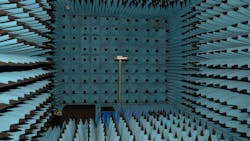Overcome LTE Certification Challenges in Your Wireless Design (Download)
U.S. carriers will switch off their 3G networks and move to 4G/LTE by the end of 2022, with carriers in other world regions likely to follow. Thus, the IoT and telematics devices that will operate on those networks must be redesigned for 4G/LTE and may need to undergo testing to gain network certification. This article sets out to shed some light on the requirements and an approach to pass certification the first time around.
For designers who are new to RF, a wireless design will need a slightly different approach that considers the antenna and allows it to perform well. If the antenna is embedded, i.e., a surface-mount-device (SMD) antenna, it needs to be placed in the design with care or it may not behave as intended.
Even if the device doesn’t require certification, the design approach we outline here to prepare for testing also will help you garner better results from the antenna.
